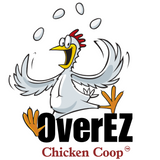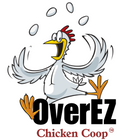Fall is a season of change for your flock—shorter days, cooler nights, and of course, molting season. For chicken keepers, molting is often the most dreaded time of year. Feathers everywhere, cranky hens, and an egg basket that suddenly looks a lot lighter. But with the right nutrition and care, you can help your birds bounce back stronger—and even keep egg production steady.
🪶 What Is Molting?
Molting is your chickens’ natural way of shedding old feathers and growing in fresh plumage before winter. It usually happens in the fall, when daylight hours decrease. Molting takes a huge amount of energy, which is why egg laying often slows—or even stops completely—during this period.
🍗 Protein, Protein, Protein
Feathers are made of about 85% protein, so your hens need a boost to regrow them quickly. Switching to or supplementing with a higher-protein feed during molting season is key. You can also add:
-
Dried mealworms or black soldier fly larvae
-
Sunflower seeds
-
Scrambled eggs (yes, chickens can eat eggs—just cooked!)
🥬 Don’t Forget the Extras
While protein is the star of the show, balanced nutrition helps your hens recover faster. Offer:
-
Fresh greens (kale, spinach, clover) for vitamins and minerals
-
Oyster shell for calcium support, especially if eggs are still being laid
-
Apple cider vinegar in water (a small splash) to support immunity during stress
😤 Temperament Changes Are Normal
Don’t be surprised if your usually sweet hens get a little moody. Growing feathers is uncomfortable, and chickens don’t enjoy being handled during a molt. Give them space and a stress-free environment—it’ll help them recover more quickly.
🌟 The Payoff
Molting may be every chicken owner’s least favorite season, but it’s also a sign of renewal. With a little extra nutrition and care, your flock will come out of fall with glossy new feathers, healthier bodies, and a stronger foundation for egg production through the winter.

